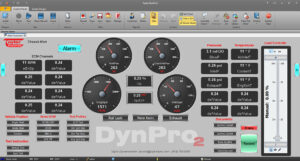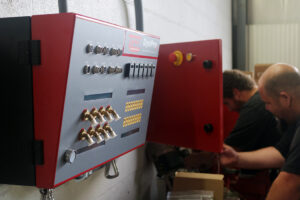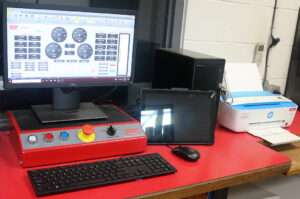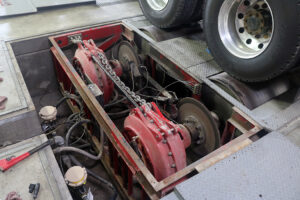If you’ve been listening to The Power Hour with Kevin Rutherford of late, you will have heard talk of our chassis dyno getting ready to have a bit of a facelift. Well, the time has come, and the old girl is about to be bigger and better than ever. It took months of planning and waiting, but the parts are finally out of the box, and our engineers, along with a Taylor-certified engineer, have been working feverishly to complete this arduous task in less than a week.
Anyone who has been to the shop for tuning or diagnostics issues has likely seen this beast. In tandem with our custom fifth wheel latching mechanism (which has affectionately been named the Giraffe), it is an indispensable piece of equipment to our shop, which is usually running all day, every day.
The previous generation of this dyno has served us well and allowed us to measure everything from torque and horsepower ratings to pyro temperatures, boost numbers, and fuel pressures/restrictions. Unfortunately, it started showing its age once the newer generations of trucks began to emerge. With new trucks came ECMs, more sensors, and far different protocols that our dyno could not communicate with without a lot of modification. The new dyno retains all the abilities of the old design but adds the ability to speak to all the new trucks and adds the potential for automation. What this will mean going forward is that we can set tests to follow particular sets of parameters.
These specific tests mean we will have more control over the engine, and all tests will be exactly the same. We will now be able to test and produce tunes with pinpoint accuracy. This could mean more efficient power, higher fuel mileage, aftertreatment efficiency, or maybe even a mix, depending on your application or where you’re running.
One of the differences with this new system is the size – the older system was designed over a decade ago, and the quantum leap in engineering shows. Instead of a massive black control box with a maze of wiring and connections that need to be cemented into the ground, we now only require three small boxes, that mount to the wall, that are controlled wirelessly with a handheld tablet. Further hardware changes have been made by installing updated gate valves to help with the response time of the water flowing to the in-ground torque converters, which will help add even more accuracy to our results.
Overall, the updates to this system will help us create even better tunes and allow us to serve our customers consistently for another decade and beyond. Since writing this article, all updates have been completed, and we are always taking your calls. Be one of the first to try out our new setup and see the results for yourself. We hope to see you soon! Please feel free to visit our shop in Saxonburg, PA or call us at (724) 360-4080. You can also check out all our products and services 24/7 online at www.pittsburghpower.com.




